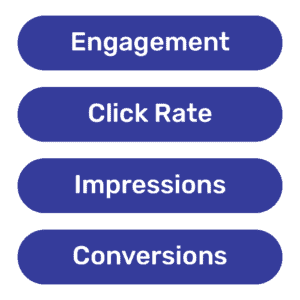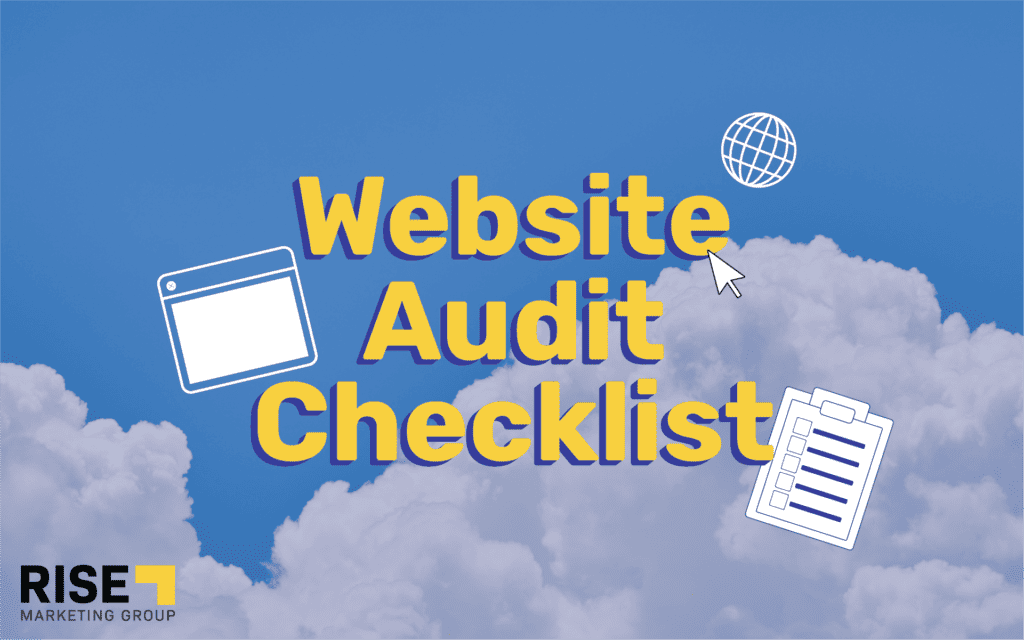What is a Website Audit?
A website audit is an opportunity to review your site and uncover any issues or areas of improvement within the site. After a website audit, you should have actionable items to take away that you can work on to enhance user experience, SEO, and your site’s overall health.
The information provided in a website audit is typically laid out in a spreadsheet, multi-page report, or combination of both. It will show you how your site is currently performing and use that information to guide the future direction of your site for a better overall experience.
Since site audits require a certain level of technical SEO expertise, they are typically conducted by a web developer or SEO consultant.
Why a Website Audit Is Important
Website audits allow you to analyze an overview of your entire site. Checking your site’s overall health ensures that pages on the site load properly, information is received by users, your site is secure, and users have an overall positive experience engaging with your brand while following SEO best practices.
Site audits review your site’s current SEO efforts to help you strategize how to improve your rankings in search engines. For example, a site audit can show you which keywords are performing the best on your site or find keywords missing from your site that provide ample opportunity for growth.
Companies looking for growth or improving their competitive strategies should conduct a website audit. You can compare your website audit to competitor sites and discover ways to improve your position in search engines.
Even if companies are not in an area where they are looking for growth, it is important to conduct a site audit periodically to ensure that your site is healthy and functioning as it should, so users are able to easily engage with what you have to offer.
What Are the Different Areas of a Website Audit?
Different areas of website audits will analyze different aspects of your site in order to provide future strategies for your business. Some of the different areas of website audits are:
- Technical site audit
- UX audit
- Content audit
The different areas of website audits go hand in hand to improve users’ overall experience and help improve your ranking in search engines.
Technical site audits analyze your site’s backend to ensure that it is functioning properly, loading quickly, set up efficiently, and is secure.
Aspects of a technical site audit include ensuring URLs are indexed, important URLs are not being blocked by the Robots.txt file, sitemaps are submitted to search engines, and duplicate URLs are consolidated with canonical tags.
UX/UI audits analyze how your site’s design and content contributes to a user’s overall experience. Areas of a UX audit include
1. Indexing/Crawling

You will want to ensure that important pages on your site are being crawled. A site audit will locate any pages on your site that are not indexed. If there are pages that are not indexed, they should be because you purposely did not want Google to crawl those pages. Otherwise, this can be set as an actionable follow up item after conducting an SEO audit.
Manually requesting indexing for specific URLs on your site can be helpful to pages that have recently undergone changes/updates.
2. SEO Content
Content is a major ranking factor for SEO, especially since the launch of Google’s helpful content update. A website audit will help determine opportunities for optimization within your content, including updating meta tags, image alt text, internal linking, and making sure that you are providing quality content for users that will make them want to stay on your pages for a long time.
Meta Data
Meta data on your site should be relevant to each different page on your site. You do not want to have any duplicate meta descriptions on your site since each page on your site should present unique content.
Adding relevant keywords to your meta data is a great way to enhance SEO on each page. An SEO site audit will present opportunities to add keywords to the meta titles and descriptions on your site.
3. Design/UX
When it comes to your site’s design, you want to make sure that it does not take away from the user’s experience but rather enhances it. A site audit should seek ways to improve a user’s experience while they are visiting the site to increase conversion, the amount of time they spend on the site, and encourage a returning visit to the site.
Page speed plays a major role in ensuring that the user has a positive experience on your site. If you have slow page speed, it could cause your core web vitals to fail for either desktop or mobile, which could negatively impact SEO. One free tool we often use for a core web vitals test is Page Speed Insights.
Clear calls to action, organized structure, optimized page titles, appropriate headings, and a friendly mobile user experience are all important factors that are assessed during a site audit.

4. Site Performance
Similar to how UX design is assessed in a site audit, site performance should also be reviewed during an SEO audit. Engagement, click rate, impressions, and conversions all show you how your site is performing organically. You can also review how user SERP engagement contributes to your site’s organic performance by assessing how pages on your site appear in search engine results pages.
5. Backlink Profile
During a site audit, you will want to analyze your site’s internal and external backlinks. Pages on your site that do not include any links are perfect areas of opportunity to increase that page’s SEO. There might also be internal links on your site that are broken or outdated. Updating these links could enhance user experience and show search engines that you are presenting relevant content.
External backlinks, such as directory links and links from guest blogs, can help increase your site’s authority score by showing that you are providing credible, relevant content to users. When the links come from sites with high traffic, it can help boost your own site’s traffic. You will also want to ensure that spammy sites are not linking back to your site, which could increase the toxicity level of your backlink profile.
6. Sitemap
There are two types of sitemaps that should be reviewed during a site audit: XML sitemaps and HTML sitemaps. Search engines crawl XML sitemaps to get a sense of the layout of your site in order to seek out the most important information. HTML sitemaps target user experience and serve as a navigational tool for people.
Tools like Screaming Frog can easily pull your XML sitemap to review.
7. Set Up Analytics Tracking
When implementing your SEO efforts based on your website audit, you will want to make sure that you can track your progress. Setting up analytics tracking can be done through a multitude of platforms including SEMrush, GA4, and Google Search Console.
When you are outsourcing a website audit, your SEO consultant may ask for access to one of these platforms. You will want to ensure that you get these set up as soon as possible your site’s performance month over month and, eventually, year over year.
Analytics tracking platforms include valuable insight into your SEO including organic traffic, organic search positions, keywords, core web vitals, and more. You can also review if important pages on your site are being indexed by Google and manually request to have these pages indexed if they are not already.
Download Our Full Website Audit PDF
If you are outsourcing digital marketing, this website audit PDF will serve as a perfect checklist to guide you through the audit process and help you understand what a web developer or SEO consultant might look for when they are reviewing your site.
Website Audit YouTube Video Transcript
My name’s Ben Lund. I’m the founder of Rise Marketing Group. In this video, I’m going to go over a website audit checklist. And what exactly does that mean? This is a checklist that any website owner should review, just to make sure that their website is in an ideal spot and puts itself in the best possible chance to drive customers as well as leads for your business. So let’s jump right into it.
So first and foremost, you need to have proper measurement. Analytics is number one. If you don’t have proper measurement and analytics, you have no idea how your website is even doing and what users are doing on your website or where they’re even coming from. So first, I’d recommend getting Google Analytics on your website. For anyone who does have Google Analytics, but it’s Universal Analytics, make sure that you upgrade this as soon as possible. GA4, that is the new standard that’s out there. You need to get that upgraded because Universal Analytics is sunset, will be sunset July of 2023. So get that all set up.
Next is Google Search Console. For any of you SEOs out there, you know what I’m talking about. But for those who do not know what Google Search Console is, this is an analytics and SEO tool that’s free that Google provides, that gives a wealth of information of how people are searching for your site, how they’re finding you on Google, and what types of keywords that they’re clicking on that are going to your website. It’s super valuable just to understand how you’re ranking on Google, and it gives helpful tips on how to improve that.
The last thing on the overall topic of measurement and analytics is leverage any other third party platforms. We’re a big fan of Semrush. It gives a wealth of information, and you can even set up alerts to notify you of ranking changes. So that’s number one on our website checklist, is making sure you have proper analytics and measurement set up.
Next is content. You have to have good content. This isn’t the internet of 10 years ago or 15 years ago, where you can just put up whatever content and you’ll do okay because it wasn’t as competitive. Right now, pick an industry, it’s competitive, and you need to have unique value driven content. And if it’s not unique or value driven or engaging, users are just going to leave and go to the next site that does provide a much superior experience from a content perspective. So just making sure that your content adds value.
If you are good in front of a camera, or even if you’re not so good, you should get in front of a camera because people really engage well with video and it really helps tell your story with sight, sound, and motion. So just make sure that you have sufficient content that tells your story, has strong value proposition, and is really led by value. So go through your website, take a look at your content.
Next is the design of the website. Is it easy to follow? Is it structurally sound, or does the menu have so many different options that users will get confused? Just understand that for anyone who finds your website, they may only be on your website for 10 seconds, 20 seconds, 50 seconds. You can’t assume that they are going to find you and stay on your website for five minutes. They won’t. If they don’t know what to do on your website, they’re just going to bounce. So making sure that the website design is very clear, concise, straightforward. You give out the information that you want to communicate early, as early as possible, and guide users to the right path that you would like them to take. So that’s the design, just at a high level.
Next, if you have a website that has been live for a while, take a look at your site engagement. So this goes back to the measurement topic that I was talking about, is how are your visitors? Are you getting traffic? What’s the engagement rate or your conversion rate, if you set a proper measurement of the percentage of people that visited your website to actually become a customer, maybe transacted with you, or sent out the lead form?
These data points are really telling to see where you should be focused on. If you have a great engagement rate but you just don’t have traffic, well then you should probably work on your SEO or maybe do some paid advertising. Or if you’re getting a lot of traffic but they’re just not converting, take a look at your website, take a look at your content. Is it very laid out? Do you have a strong selling proposition? But always be mindful of your site performance.
And if you have Google Search Console set up, it will tell you also on your page speed, is your site slow? Because people have a short attention span. And if your site is taken a while to load, especially on a mobile phone that’s not tapped into a wifi network, that should be top priority.
And then lastly, what I’d call out for, and this is more for people who are in tune with SEO, is take a look at your domain authority. Are other websites mentioning your website and your business and linking to you? Now domain authority is a third party metric. You can access this through a variety of tools, including Semrush, which is the platform that we really like to use. And it’s a scoring of zero to 100 and it just is a metric of how many other websites are linking to you. And this has always been a ranking factor of Google. It’s not the ranking factor, but it’s one of the more important ranking factors.
Now, you just don’t want to have any website linking to you. The website has to be contextually relevant and a legit website that’s been around for a while. Otherwise, Google will see right past that. But domain authority is a good thing to check out for your checklist, especially if you’re trying to increase your organic traffic.
So hopefully this video is helpful in giving some high level bullet points of what you should be looking at for your website. And if you’re watching this on YouTube, click in the description and you’ll see a link to our blog post that actually has a downloadable PDF that has a bit more information of things that you should look out for, for your website. Thank you.




